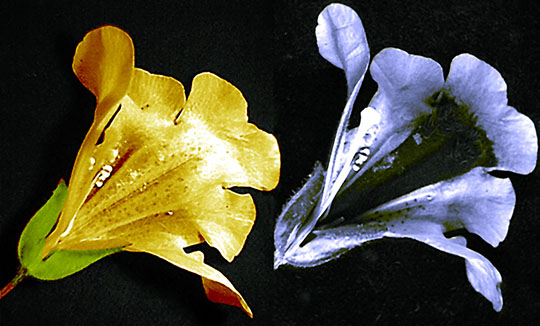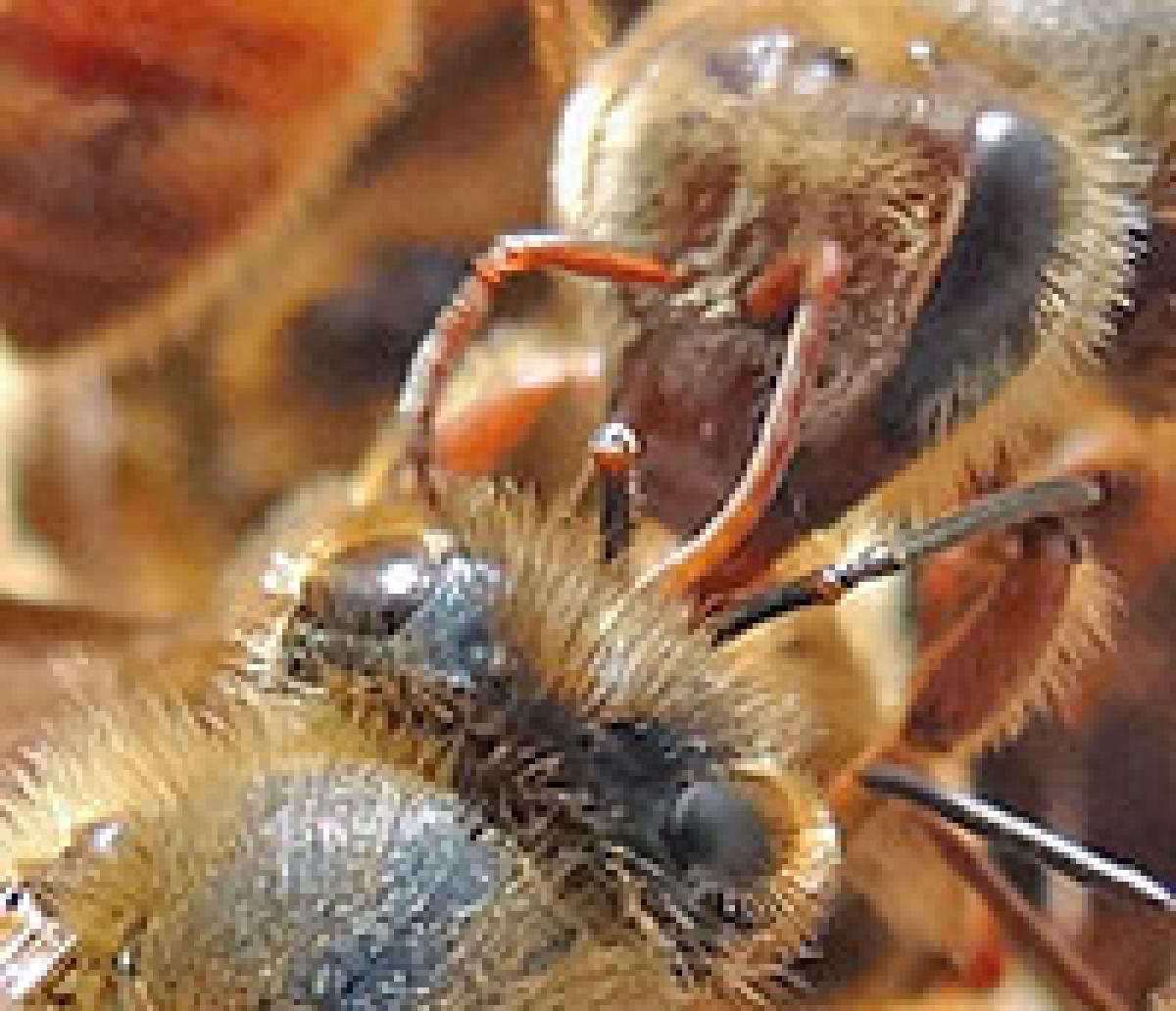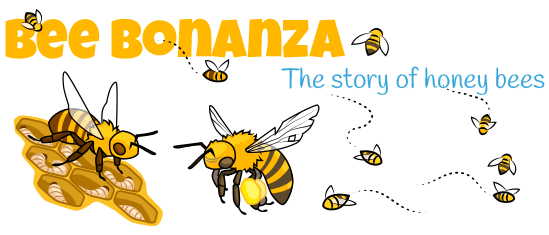Bee Communication
Honey bees use all of their senses to find the best flowers including: smell, color, shape, location, petal textures, and time of day. But what does a bee do when she wants to tell her sisters what she has discovered?

How Bees See Flowers
Honey bees and most insects can see most colors you and I see— green, blue, and violet. Honey bees cannot discriminate reds very well, but in exchange they can see ultraviolet light—the same light we use sunscreen to protect our skin from. Most flowers have taken advantage of this and have ultraviolet patches called nectar guides. These guides help attract bees to land and show the bees where to get nectar.

Honey Bee Dance Language
How does a honey bee tell her sisters when she finds the locations of rewarding flowers, a drinking hole, or even a great new home? She will fly home and dance. That’s right, dance. Experienced bees use the angle of their body relative to the hive ceiling to tell their sisters the direction and approximate distance of whatever they are dancing for. Then the well-informed sisters go off and check out this location for themselves. You can play the bee game and try to interpret the dances of bees yourself.

Karl von Frisch won the Nobel Prize in 1973 in part for deciphering the language of the bees. In some of his first experiments he put a honey bee hive in a field with a single nectar feeder for the bees to collect from. Dr. Frisch then sat and watched the bees inside their hive.
After long hours of observation he noticed the bees doing a waggling behavior inside the hive. He traced and measured animals as they did this behavior throughout the day. By doing this Dr. Frisch noticed that the bees changed the angle that they danced at the same rate as the sun moving through the sky. He discovered the bees were using dance to point their sisters to the sugar feeder relative to the sun. Later Dr. Frisch and others deciphered other parts of the bee dance language that encoded distance, but there is still so much we can learn about these marvelous little insects.
Read more about: Bee Bonanza
Bibliographic details:
- Article: Bee Communication
- Author(s): Dr. Biology
- Publisher: Arizona State University School of Life Sciences Ask A Biologist
- Site name: ASU - Ask A Biologist
- Date published:
- Date accessed:
- Link: https://askabiologist.asu.edu/honey-bee-communication
APA Style
Dr. Biology. (). Bee Communication. ASU - Ask A Biologist. Retrieved from https://askabiologist.asu.edu/honey-bee-communication
Chicago Manual of Style
Dr. Biology. "Bee Communication". ASU - Ask A Biologist. . https://askabiologist.asu.edu/honey-bee-communication
Dr. Biology. "Bee Communication". ASU - Ask A Biologist. . ASU - Ask A Biologist, Web. https://askabiologist.asu.edu/honey-bee-communication
MLA 2017 Style

Worker bees communicating with their antennae.
Be Part of
Ask A Biologist
By volunteering, or simply sending us feedback on the site. Scientists, teachers, writers, illustrators, and translators are all important to the program. If you are interested in helping with the website we have a Volunteers page to get the process started.

